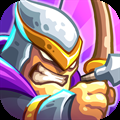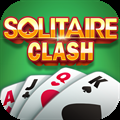From China with love: A guide to TiddlerCelestial's burst Mage

It’s a wide known fact that the minds of the Chinese progamers think differently, and that’s just as true when it comes to a game like Hearthstone. Ever since the early days of the game, China has been innovative in its deckbuilding, credited for the invention of builds such as the defensive Watcher Druids that once ruled the meta.
Even if Hearthstone is much more researched and fleshed out these days, unorthodox decks are still out there. Case in point is the new Mage invention of Blizzcon runner-up Xieyu “TiddlerCelestial” Wang which looks like your regular aggro Mage but isn’t really. The deck has the fantastic ability to switch stances and go from face aggression to defensive Frost Mage-esque stalling tactics, digging for the end-game burst.
To understand how Tiddler’s Mage works, we need to break it down into its three major components: the pressure, the glue and the kill.
Step 1: The pressure
When a deck contains cards like [card]Leper Gnome[/card] and [card]Mana Wyrm[/card], it’s safe to assume it’s aggressive in nature and this is exactly how Tiddler’s Mage opens the early game. It features a variety of 1 and 2 drops whose main purpose is to chip at opponent’s life total. Unlike other aggressive Mage decks like the Mech variations, however, Tiddler’s Mage doesn’t enjoy a particularly powerful curve. In fact, there are no battle minions – i.e. minions which you can use to make decent trades – above the 2-mana slot.
This early game curve has its own peculiarities. Tiddler uses double [card]Arcane Missiles[/card] and double [card]Mad Bomber[/card], both cards which aren’t seen in traditional Mage builds, be they aggro, midrange or control. What you will find is that they can be very powerful tempo plays, which is important because that’s a necessary step towards winning the game. [card]Arcane Missiles[/card] are not only a cheap buff for your [card]Mana Wyrm[/card]s but can also remove stealthed [card]Shade of Naxxramas[/card] or wound minions down to ping range. Same goes for [card]Mad Bomber[/card], who is also a great activator for your [card]Acolyte of Pain[/card].
Unless you draw horribly, you will easily be able to deal around 10 damage upon entering the mid-game around turns 4-5. This should also be your indicator how well you’re doing – if your opponent is not suffering early game damage, you’re likely headed for a loss.
Step 2: The glue
With the coming of the mid-game, your opponent will have likely dealt with your early pressure and if he hasn’t that means you’re sprinting towards a T6 victory. The latter, as sweet as they are, are not 100% guaranteed occasions so let’s examine what happens after.
If we look at the decklist again, we’ll notice several cards that seem out of place in an aggressive deck. [card]Frost Nova[/card] and [card]Ice Block[/card] are core cards for Frost Mages but what are they doing in the same place as [card]Mana Wyrm[/card]s, [card]Leper Gnome[/card]s and [card]Arcane Missiles[/card].
At this point, you’ll remember what we already mentioned about Tiddler’s Mage: This isn’t a minion-based deck. It’s fiery and explosive in nature but it wins through spells and not through minion attacks. As such, it needs a number of card advantage and stall mechanics to glue the transition between early pressure and end-game spell burst.
Out of the 30 cards in the deck, nine will get you a card draw, including [card]Mad Scientist[/card]’s deathrattle. Learning when to use them is the most crucial step towards mastering this deck. Generating card advantage is almost always associated with tempo loss and you need to balance those perfectly during the mid-game. The card draw is meant to dig for the [card]Frostbolt[/card]/[card]Ice Lance[/card] combos, the essential [card]Bloodmage Thalnos[/card] and the fire burst on [card]Fireball[/card] and [card]Pyroblast[/card]. With [card]Ice Lance[/card] activated, there’s a total of 36 points of direct damage in the deck not counting spells like [card]Arcane Missiles[/card] or the spell damage of Thalnos. Yes, that’s a lot.
Additionally, the two [card]Ice Block[/card]s and [card]Frost Nova[/card]s will buy you much needed time. They’re especially valuable when facing other proactive decks which will use your passive mid-game to turn the race around and apply counter-pressure. Often in these match-us these stall mechanics will be what wins the game as you essentially negate incoming damage while dishing out yours.
During the mid-game portion, you need to be aware of three things:
- How much burst damage you have, in hand and in deck
- How much more do you need for lethal
- How much damage is coming your way and consequently how much time you have before you’re dead
All this requires patient planning and getting used to. If you’re a novice player, you’ll lose a lot of games making the wrong play – you’ll lose a lot of tempo while drawing or you will run out of damage by not drawing enough. The moment you find the golden center the tides will turn in your favor.
Step 3: The kill
This is a pretty straightforward step, though you need to enter it fully aware of your available direct damage. Unless in rare exceptions when you need to buy even more turns, those [card]Frostbolt[/card]s and [card]Ice Lance[/card]s must land in the enemy’s face, and same goes for the [card]Fireball[/card]. I don’t think I need to tell you what to do with [card]Pyroblast[/card].
One card that is the centerpiece of an effective burst is [card]Bloodmage Thalnos[/card]. While you will be tempted to play it early for more [card]Arcane Missiles[/card] – and sometimes this will be the correct play – you want to save him for the kill. An empowered [card]Frostbolt[/card] + 2x [card]Ice Lance[/card] combo deals as much as 14 damage on T6. That’s half the opponent’s life!
In some situations, you will have to use your direct damage to clear the enemy board, though, which brings is again to the old mantras of “know how much damage you have” and “how much damage you can take”. Calculate at least a turn ahead and play out possible scenarios in your head – basic mathematics might be boring, but you have to do it.
Mulliganing
Throw away every finisher piece and stall mechanic you draw – you don’t want any [card]Fireball[/card]s, [card]Ice Lance[/card]s, [card]Frost Nova[/card]s or [card]Ice Block[/card]s in the early game. Instead, look for the [card]Leper Gnome[/card]s, [card]Mana Wyrm[/card]s and [card]Arcane Missiles[/card] as your pressure pieces. Essential early games cards are [card]Loot Hoarder[/card] and [card]Mad Scientist[/card] which are the few draw mechanics that won’t set you too behind on tempo.
Depending on the match-up, there are cards you will keep or discard. Against control match-ups I will rarely hold on to [card]Frostbolt[/card] but I will consider keeping one against Mech Mages for extra removal. [card]Mad Bomber[/card] is an interesting card that punishes decks that run low-health minions in the early game (Face Hunter, Paladin) but is also great for sniping [card]Shade of Naxxramas[/card] against Druids. [card]Acolyte of Pain[/card] I would usually discard unless I’m playing against Paladin – it’s great for clearing their 1/1 dudes and Paladin’s don’t have a reliable way to remove it in one hit until [card]Truesilver Champion[/card].
So to sum it up:
Keep[card]Arcane Missiles[/card]Mana Wyrm buffer.[card]Mana Wyrm[/card]Early pressure[card]Leper Gnome[/card]Early pressure[card]Loot Hoarder[/card]Card advantage on a body[card]Mad Scientist[/card]Free Ice BlocksDiscard[card]Ice Lance[/card]End game burst card[card]Fireball[/card]End game burst card[card]Pyroblast[/card]End game burst card[card]Bloodmage Thalnos[/card]Burst buffer.[card]Ice Block[/card]Stall effect[card]Frost Nova[/card]Stall effect[card]Loatheb[/card]It's a 5-dropSituational[card]Frostbolt[/card]Keep 1 against Mech Mages and similar decks[card]Mad Bomber[/card]Keep against decks with low-health or stealthed minions[card]Arcane Golem[/card]Keep in race match-ups, e.g. against Face Hunter[card]Arcane Intellect[/card]Consider keeping against very slow decks[card]Acolyte of Pain[/card]Keep against Paladin. Discard otherwiseMatch-ups and general performance
The deck is amazing on ladder for the sheer reason that nobody expects it. I would pay money to see the faces of Druids losing their Shade to a Bomber/Arcane Missiles combo or control decks losing on T6 after they thought they were safe after removing my board. The record in my first 20 games was 15-5, where three of those were due to clunky starting hands. The fourth was a classic calculation mistake and the fifth was due to poorly played mid-game from my end. In short:
- If you get two Ice Blocks in opening hand, you’ll likely lose
- If you don’t calculate your damage, you’ll waste it for nothing and you’ll likely lose
- If you misplay the midgame and take too much damage, you’ll likely lose
In every other occasion, you’ll have a huge edge over your opponents because you can kill faster than anybody else but you also have extra turn mechanics that traditional aggro decks don’t possess. On to the match-ups real quick:
Druid: I’ve found Druids to be one of the toughest decks to beat, especially if they get a great [card]Innervate[/card] early on. A T3 Druid of the Claw shuts down your early aggression almost completely and losing a Fireball to it damage your burst potential severely. Their [card]Ancient of Lore[/card]s are fantastic counters to your late-game plan.
Hunter: Most Hunters – even face ones – will think they can outrace you. They can’t. I’m still to lose to a Hunter player, actually: [card]Arcane Missiles[/card] is great against their early-game cards and [card]Ice Block[/card] will just make their day awful. They’ll never run healing cards, so it’s close to an auto-win unless you draw or misplay horribly.
Mage: Against Mech, it’s a 50/50 match-up, decided by who wins the early tempo game. A perfect curve from the Mechs is impossible to beat but if they don’t get to a quick start, you can use [card]Frost Nova[/card] and [card]Ice Block[/card] to delay them. You have more burst than them, that’s your edge. Against Frost Mages, it’s rather easy. Their mass removals will be useless because you don’t play minions past the mid-game and their slow nature will give you plenty of time to dig for your finishers.
Paladin: I’ve found this to be a 70/30 match-up in your favor. Paladins don’t have many ways to shut down the early aggression and they’re entirely reliant on having [card]Antique Healbot[/card]s to keep them alive. If they don’t draw them, the game is yours.
Priest: Priests are generally bad nowadays, so that’s an easy match-up by default. A circled [card]Injured Blademaster[/card] is your biggest worry as it’s impossible to deal with, but other than that you should be dandy.
Rogue: Another 50/50 match-up. Rogues have just as much burst as you do and most of it you can’t prevent with [card]Frost Nova[/card] because it comes charging with [card]Southsea Deckhand[/card]. They also run heals and [card]Loatheb[/card] which shuts down your damage. One way to beat them is to get a great early game start and put them down to the point of no return. The other requires clever use of [card]Ice Lance[/card] and [card]Frostbolt[/card] to freeze their weapons and with that their damage potential.
Shaman: Basically the same as the Mech Mage match-up.
Warlock: Both Warlock decks are in a disadvantage against you. The mid-range Demonlocks are a bit harder to beat because they have heal on a stick with [card]Mistress of Pain[/card] and a [card]Voidcaller[/card]’d [card]Mal'Ganis[/card] can shut you down, but every Life Tap makes bursting them down easier. Handlocks are easier but you need to get an explosive start and gun them down early. Don’t worry about free taunted [card]Molten Giant[/card]s – your finishers have reach.
Warrior: Very favorable match-up, close to an auto-win if they don’t draw the majority their big heals like [card]Shieldmaiden[/card] and [card]Shield Block[/card]. Even then they’ll find it hard to win – their points removals are useless and their weapons will have them take even more damage.
So that's it from our first edition of "From China with Love". I strongly suggest you try Tiddler's Mage on ladder if you enjoy playing the class - it's a fresh take on Jaina and incredibly fun to play at the same time.
This decklists is courtesy of @HearthstoneNEL so make sure you follow them on Twitter. While you're there, hit me up as well @GGNydra.
More on GosuGamers Hearthstone:













